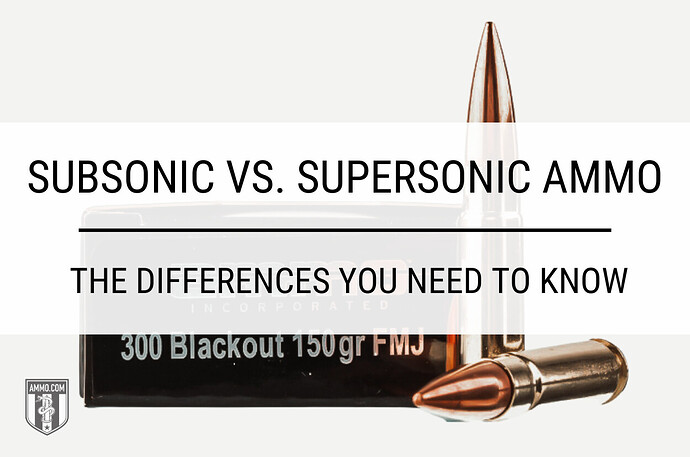So you just saw a box of ammo labeled “subsonic” and another one labeled “supersonic” – both claiming to be for the same firearm.
What do those words mean with regard to ammo? What makes one different from the other? You must understand these things before you can make the most effective use of your firearm.
Fortunately, it’s not all that complicated. Today, we’re discussing subsonic vs. supersonic ammo: their differences, their relative pros and cons, and which one is better for your needs. By the end of this article, you’ll know which type of ammo you should choose.
Let’s get after it.
nderstanding the Speed of Sound and Its Effect on Ammunition
To understand the difference between subsonic and supersonic ammo, you must understand (A) the speed of sound and (B) how bullets are affected by it.
The speed at which sound waves travel depends on a few atmospheric variables (elevation, temperature, barometric pressure, humidity, etc.). For simplicity’s sake, it’s standard to assume the speed of sound equals 1,125 feet per second (ft/s; or 767 mph) at 68 °F. When an object exceeds the speed of sound (i.e., becomes supersonic), it breaks the sound barrier and issues a sharp cracking noise (sonic boom) as a result.
Ever been to an air show with fighter jets? Remember the awesome “ker-POW” as their engines fired off? Those were sonic booms.
What Is Supersonic Ammo?
Most modern ammo designs are supersonic by nature: i.e., loaded with bullets that exit the barrel at a velocity higher than 1,125 ft/s. Ignition of a supersonic cartridge is always accompanied by a distinctive “CRACK” – a literal sonic boom.
Supersonic bullets aren’t necessarily more powerful than subsonic alternatives (bullet weight also plays a significant role in striking energy), though they do tend to follow flatter trajectories to their targets. That facilitates aiming, as it allows the shooter to make less compensation for bullet drop (which becomes less pronounced when the bullet takes a relatively shorter amount of time to traverse a given distance).
What Is Subsonic Ammo?
Subsonic ammunition is designed to fire its projectiles at a velocity below the speed of sound (1,125 ft/s). It is typically loaded with heavier bullets than its supersonic counterparts (e.g., 300 BLK, which is supersonic at 150 grains and subsonic at 190).
Subsonic ammo’s performance is quieter than that of supersonic alternatives. It is unable to break the sound barrier, and therefore avoids producing a sonic boom on ignition.
I’ve always found subsonic ammo to have a softer report, generate less recoil, and deliver better long-distance accuracy. That third facet of performance is due to a quirk of physics. When a bullet’s velocity transitions from supersonic to subsonic, it undergoes what is known as “transonic destabilization.” This phenomenon causes the bullet to wander off of its intended trajectory — and is totally averted by a bullet that never becomes supersonic in the first place.
Continue reading Subsonic vs. Supersonic Ammo: The Differences You Need to Know on Ammo.com
